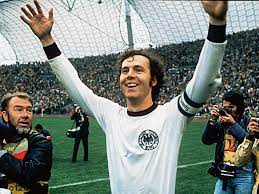The Decline of the Libero Position in Soccer: Exploring the Reasons
The libero position in soccer has undergone a significant decline in recent years. This position, which was once a vital part of the game, has become less common in modern football. The libero, also known as the sweeper, was a key player in the defense, providing extra cover for the backline and acting as the last line of defense before the goalkeeper.
The decline of the libero position can be attributed to a number of factors. One of the main reasons is the evolution of tactics in modern football. Teams now prefer to play with a back four or back three, which has reduced the need for a dedicated sweeper. Additionally, the offside rule has changed, making it less advantageous to have a single defender hanging back around the goal.
Despite the decline of the libero position, some teams still use variations of this role. For example, some center-backs have adopted a more attacking role, venturing forward to join the attack and provide an extra option in midfield. This type of ball-playing center-back is becoming more common in modern football, as teams look to build from the back and play a possession-based game.
The Role of the Libero Position in Soccer
The libero position, also known as the sweeper, was once a crucial part of soccer tactics. The position was first introduced in the 1960s in Italy, and it quickly gained popularity throughout Europe. The libero was a defensive player who played behind the other defenders, acting as a last line of defense for the team. The position was characterized by its freedom to roam around the field, making it a unique role in soccer.
The libero’s primary responsibility was to read the game, anticipate the opposition’s moves, and intercept the ball before it reached the goal. The position required excellent vision, tactical awareness, and decision-making skills. The libero was also responsible for organizing the defense, communicating with the other defenders, and directing the team’s play from the back.
Initially, the libero was seen as extra defensive cover for the defense, in a position to provide clearances away from goal. However, as the role developed, it started to include dribbles into midfield and intelligent forward passing into the feet of attacking teammates. The libero was an essential part of the team’s attack, as they could initiate counter-attacks and set up scoring opportunities.
| Key Responsibilities of the Libero Position |
|---|
| Reading the game and intercepting the ball |
| Organizing the defense and communicating with the other defenders |
| Directing the team’s play from the back |
| Initiating counter-attacks and setting up scoring opportunities |
The libero position became synonymous with some of the greatest soccer players in history, such as Franz Beckenbauer, Franco Baresi, and Matthias Sammer. These players revolutionized the position, taking it to new heights and making it an integral part of soccer tactics.
However, in recent years, the libero position has declined in popularity. Many teams now prefer to play with a flat back four, with no dedicated sweeper. The reasons for this decline are varied, but some experts believe that it is due to changes in tactics and playing styles.
Despite the decline of the libero position, its legacy lives on. Many of the skills required to play the position are still highly valued in modern soccer, such as vision, tactical awareness, and decision-making skills. The libero position may no longer be as popular as it once was, but its influence on soccer tactics and strategy will be felt for many years to come.
Factors Contributing to the Decline of the Libero Position
Tactical Changes in Modern Soccer
In modern soccer, teams have shifted towards a more possession-based style of play, which has resulted in a decreased need for a dedicated libero. With the rise of the 4-3-3 formation, the role of the central defender has become more important, with the emphasis on ball-playing ability and distribution rather than solely defensive duties. This has led to a decline in the use of the libero as a specialist defensive player.
Evolution of Defensive Strategies
Defensive strategies in soccer have evolved over time, with teams now placing a greater emphasis on zonal marking rather than man-to-man marking. This has made it more difficult for a single player to effectively cover the entire defensive line, which was one of the primary roles of the libero position. Additionally, the use of a sweeper-keeper has become more common, with the goalkeeper taking on some of the duties traditionally assigned to the libero.
Increased Emphasis on Attacking Play
Another factor contributing to the decline of the libero position is the increased emphasis on attacking play in modern soccer. Teams are now more focused on scoring goals than preventing them, which has resulted in a decreased need for a dedicated defensive player. With the rise of attacking full-backs and wing-backs, the role of the libero has become less important.
| Factors Contributing to the Decline of the Libero Position |
|---|
| Tactical Changes in Modern Soccer |
| Evolution of Defensive Strategies |
| Increased Emphasis on Attacking Play |
Overall, the decline of the libero position in soccer can be attributed to a combination of factors, including changes in tactical approaches, defensive strategies, and the increased emphasis on attacking play. While the role of the libero may have diminished in modern soccer, its legacy lives on as one of the most iconic positions in the history of the sport.
Impact of the Decline of the Libero Position on Soccer
Changes in Defensive Strategies
The decline of the libero position has led to significant changes in defensive strategies in modern soccer. Teams now rely on a more compact defense, with all players working together to prevent the opposition from scoring. The traditional role of the libero was to provide extra cover for the defense, but with the offside rule and other changes in the game, this role has become less important.
Teams now use different defensive formations, such as the 4-4-2, 4-3-3, and 3-5-2. These formations allow for more flexibility in defense, with players able to switch positions and cover for each other as needed. The decline of the libero position has also led to the rise of the sweeper-keeper, a goalkeeper who is more involved in the game and plays a more active role in defense.
Effect on Individual Players and Teams
The decline of the libero position has had a significant impact on individual players and teams. For players who were traditionally liberos, they have had to adapt to new roles and positions on the field. This has required them to develop new skills and abilities, such as dribbling, passing, and shooting.
For teams, the decline of the libero position has meant that they must focus on developing a more cohesive defense. This requires all players to work together, communicate effectively, and be able to switch positions as needed. Teams must also focus on developing players who can play multiple positions and are versatile enough to adapt to changes in the game.
Possible Future Developments
While the libero position may be in decline, there are still possibilities for future developments in soccer. Some experts have suggested that a new position, such as a defensive midfielder or sweeper, could emerge to fill the gap left by the libero. Other experts have suggested that teams may focus more on attacking play, with a greater emphasis on scoring goals and winning games.
Whatever the future holds for soccer, it is clear that the decline of the libero position has had a significant impact on the game. Teams and players must continue to adapt and evolve in order to succeed in the modern game.
| Key Points |
|---|
| Teams now rely on a more compact defense |
| Players must adapt to new roles and positions on the field |
| Teams must focus on developing a more cohesive defense |
| The decline of the libero position has led to the rise of the sweeper-keeper |
| Possible future developments include a new position or a greater emphasis on attacking play |








